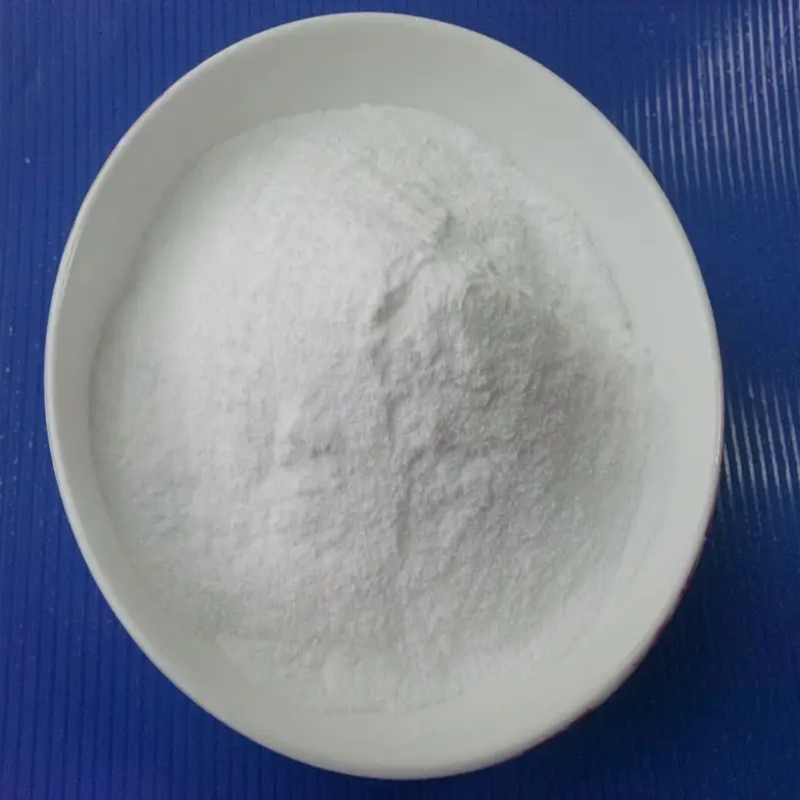-
Categories
-
Pharmaceutical Intermediates
-
Active Pharmaceutical Ingredients
-
Food Additives
- Industrial Coatings
- Agrochemicals
- Dyes and Pigments
- Surfactant
- Flavors and Fragrances
- Chemical Reagents
- Catalyst and Auxiliary
- Natural Products
- Inorganic Chemistry
-
Organic Chemistry
-
Biochemical Engineering
- Analytical Chemistry
- Cosmetic Ingredient
-
Pharmaceutical Intermediates
Promotion
ECHEMI Mall
Wholesale
Weekly Price
Exhibition
News
-
Trade Service
How is leukoencephalopathy diagnosed and differentiated? The latest issue of the clinical reasoning series of Neurology magazine reported a 23-year-old woman with progressive forgetfulness, gait instability and falls, through the clinical reasoning process of the case, let's
learn the clinical diagnosis ideas of leukoencephalopathy.
Translation: Reflection without a trace
This article is authorized by the author to be published by Yimaitong, please do not reprint
without authorization.
Part I
The patient is a 23-year-old woman presenting with "progressive forgetfulness, gait instability, and falls for 3 years
".
The patient had been in good health, delivered a normal baby, and had normal
developmental milestones.
It wasn't until she was a teenager that she excelled in field sports and was an excellent dancer
.
Academically, the patient has been at the middle of the class and has completed an Advanced Diploma
in Business Management.
After graduating from university, he worked first in an administrative office and then in a clothing store in retail, but it was difficult to operate
the cash register and IT systems.
The patient received a car on his 21st birthday, but gave up driving
a few months later because he could not learn to drive safely.
Her mother described that patients often lose belongings and need to be constantly reminded to carry personal belongings
with them.
decreased motor and dance ability, multiple falls; Sleep quality is good, but feel tired during the day; Deny being depressed, but become less talkative and withdrawn
.
The patient has three siblings, a 20-year-old brother and a 12-year-old sister; younger siblings are in good health; no family history of other neurological disorders or premature death; Patients deny a history of
drinking, smoking, or toxic use.
Neurologic examination reveals normal cranial nerves with normal tone, strength, reflexes, and sensation; Dystonic posture with no tandem gait
.
Romberg's negative
.
Addenbrooke's third edition cognitive assessment is 70/100 with significant frontal lobe and executive dysfunction
.
MRI of the head shows extensive periventricular and deep white matter signaling changes involving the corticospinal tract and brainstem; Ventricular enlargement, marked atrophy of the corpus callosum, and cerebellum (figure).
Figure: CRANIAL MRI AXIAL FLAIR AND SAGITTAL T2 sequences show frontal lobe atrophy and extensive white matter hyperintensity; The corpus callosum also has significant hypersignal and atrophy
.
Question thinking:
1.
What are the differential diagnoses?
2.
What is the next step in the assessment?
Part II
The differential diagnosis of cognitive impairment and gait disturbance with white matter changes is wide-ranging, including inflammation/autoimmunity (the patient's rate of progression is not supported), infectious (no other symptoms of infection and chronic course is not supported), tumor (the patient's rate of progression is not supported), neurogenetics (genetic degeneration, metabolic diseases, etc.
).
。 Initial laboratory tests include complete blood count, erythrocyte sedimentation rate, kidney/liver/bone/thyroid function, creatinine kinase, serum protein electrophoresis, lactic acid, vitamin B12, folate, serum copper and ceruloplasmin, HIV and syphilis serology, antinuclear antibodies, ANCA, antiphospholipid antibodies, and broad paraneoplastic antibody profiles are normal or negative
.
CSF analysis, including cytology, is normal, oligoclonal band negative
.
EEG did not show any epileptiform activity
.
Neither initial blood tests nor a perfectly normal CSF support neuroinflammatory, infective, or paraneoplastic causes, so suspicion for inherited disorders, including mitochondrial cell disease or metabolic disorders
, is high.
Question thinking:
1.
How to correct the differential diagnosis?
2.
What additional checks need to be considered?
Part III
Given the absence of an obvious family history in this case, an autosomal recessive disorder
is considered.
The differential diagnosis of leukodystrophy is wide-ranging, for which patients undergo serum
amino acid profiles, ultra-long-chain fatty acids, vitamins A and E, arylsulfatase A, cholesterol, and urine organic acids.
Lysosomal enzyme assays show decreased arylsulfatase and elevated
uroglucosinolates.
Nerve conduction studies show mild- to moderately length-dependent large-fiber, sensory-predominant demyelinating polyneuropathy
.
Metabolic disease genome reveals homozygous disease-causing mutations in the ARSA gene; c.
1283C>T (Pro428Leu), confirmed as metachromatic leukodystrophy (MLD).
Repeat head MRI showed an MLD score of 21
.
Genetic testing of the patient's two younger siblings also showed that the younger brother also had the same mutation, and that the younger brother admitted to having mild attention deficit in the previous few months but no other symptoms; Mild frontal lobe execution defects in cognitive tests and cranial MRI and neurophysiology, similar
to this patient.
Question thinking:
1.
What treatments to consider?
Part IV
Metachromatic leukodystrophy (MLD) is an inherited lysosomal disease that is progressive and incurable
.
In the adult form, the disease may progress to the age of 20-30 years, usually reaching maximum disability
within 6-14 years after the onset of symptoms.
After consultation with specialists in Ireland and the UK, the patient and his brother underwent a haematopoietic stem cell transplant (HSCT).
The younger brother received HSCT first, but failed to receive a second HSCT; However, transfusion-refractory pancytopenia developed and died of intracranial hemorrhage
.
Our 23-year-old female patient subsequently underwent HSCT.
Status epilepticus complicated the post-transplant phase, but she quickly stabilized and is now 24 months
post-HSCT.
Cognitive and motor function is stable
.
discuss
MLD is a rare lysosomal storage disorder that causes arylsulfatase A (ASA) deficiency
.
1.
0-1.
8 people per 160,000 people worldwide have MLD
.
ASA deficiency causes undegraded glucosinolates to accumulate in lysosomes, particularly in myelin cells (oligodendrocytes and Schwann cells), leading to progressive demyelinating of the central and peripheral nervous systems
.
There are three clinical phenotypes of MLD: late infancy, juvenile onset, and adult-onset
.
European data suggest that adults account for about 20%
of cases.
More than 150 ARSA mutations have been reported in this patient carrying c.
1283C>T (p.
Pro428Leu) is a common adult-onset variant
.
Clinically, the initial symptoms of adult MLD are usually mental/affective symptoms, followed by decreased intellectual capacity and motor symptoms
.
In MLD, MRI of the head usually shows bilateral periventricular confluent white matter changes, predominating the frontal lobe, with early preservation of perivenous myelin sheath and typical "tigroid" – not seen
in this patient.
One small study showed that only 50% of people with MLD had a "tiger sign.
"
Predominance of frontal lobe involvement and corpus callosum atrophy may be seen early in
the disease.
In the advanced stages of the disease, progressive subcortical white matter expansion, U-fiber involvement, and progressive atrophy
can be seen.
These patterns help differentiate from other conditions such as adult-onset autosomal dominant leukodystrophy (predominant parietal lobe on MRI) and X-linked adrenal leukodystrophy (occipital-predominant).
In mitochondrial disease, small cystic lesions are seen in abnormal white matter, involving the cerebral and cerebellar white matter and bilateral basal ganglia
.
The final diagnosis of MLD is usually combined with quantitative analysis of ASA enzyme activity and genetic analysis
.
It is important to emphasize that low ASA activity
can be seen in pseudodeficiency.
At this time, uroglucosin excretion can distinguish MLD from pseudodeficiency
.
Currently, there is no cure for
MLD.
In recent years, three treatment modalities have received attention: hematopoietic stem cell transplantation (HSCT), enzyme replacement therapy (ERT), and gene therapy
.
HSCT is widely accepted as a treatment option
for early MLD.
Neuropathological studies in transplant patients showed an increase in the number of oligodendrocytes, and donor macrophages digested the accumulated glucosinolates, providing neuroprotection
for oligodendrocytes.
Patients from two small European studies developed graft-versus-host disease and/or rapid disease progression, but individuals who received early treatment had longer survival and overall exercise outcomes were better than non-transplant controls
.
The use of ERT in mouse models showed a reduction in glucosin stores in peripheral tissues, but no benefit was
shown in human subjects.
Gene therapy (with or without ERT) appears to be promising, but no trials
have been published for adult-onset MLD.
Adeno-associated vector (AAV) gene therapy has shown promise
in animal studies for the treatment of leukodystrophy.
The rarity and variability of clinical manifestations make the diagnosis of MLD difficult
in adulthood.
As this patient demonstrated, systematic analysis can help in the diagnosis
of the disease.
.
Dimitra Khalil Chaity, Conor Fearon, Michael Alexander, et al.
Clinical Reasoning: A 23-Year-Old Woman Presenting With Cognitive Impairment and Gait Disturbance.
Neurology published online September 13, 2022.
DOI 10.
1212/WNL.
0000000000201373







